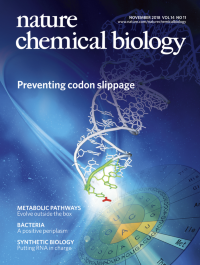
CB1 also responds to allosteric modulators, which influence cannabinoid binding and efficacy.
To understand the mechanism of these compounds, we solved the crystal structure of CB1 with the negative allosteric modulator (NAM) ORG27569 and the agonist CP55940.
The structure reveals that the NAM binds to an extrahelical site within the inner leaflet of the membrane, which overlaps with a conserved site of cholesterol interaction in many G protein-coupled receptors (GPCRs).
The ternary structure with ORG27569 and CP55940 captures an intermediate state of the receptor, in which aromatic residues at the base of the agonist-binding pocket adopt an inactive conformation despite the large contraction of the orthosteric pocket.
The structure illustrates a potential strategy for drug modulation of CB1 and other class A GPCRs.”

 “Memory and GABAergic activity in the hippocampus of stressed rats improve after n-3 polyunsaturated fatty acid (PUFA) supplementation.
“Memory and GABAergic activity in the hippocampus of stressed rats improve after n-3 polyunsaturated fatty acid (PUFA) supplementation. “Microglia are the resident, innate immune cells of the central nervous system (CNS) and are critical in managing CNS injuries and infections. Microglia also maintain CNS homeostasis by influencing neuronal development, viability, and function. However, aberrant microglial activity and phenotypes are associated with CNS pathology, including autism spectrum disorder (ASD). Thus, improving our knowledge of microglial regulation could provide insights into the maintenance of CNS homeostasis as well as the prevention and treatment of ASD.
“Microglia are the resident, innate immune cells of the central nervous system (CNS) and are critical in managing CNS injuries and infections. Microglia also maintain CNS homeostasis by influencing neuronal development, viability, and function. However, aberrant microglial activity and phenotypes are associated with CNS pathology, including autism spectrum disorder (ASD). Thus, improving our knowledge of microglial regulation could provide insights into the maintenance of CNS homeostasis as well as the prevention and treatment of ASD.

 “Understanding how the body regulates pain is fundamental to develop rational strategies to combat the growing prevalence of chronic pain states, opioid dependency, and the increased financial burden to the medical care system.
“Understanding how the body regulates pain is fundamental to develop rational strategies to combat the growing prevalence of chronic pain states, opioid dependency, and the increased financial burden to the medical care system. “The endocannabinoid (EC) system has been implicated in the pathogenesis of several metabolic diseases, including nonalcoholic fatty liver disease (NAFLD).
“The endocannabinoid (EC) system has been implicated in the pathogenesis of several metabolic diseases, including nonalcoholic fatty liver disease (NAFLD). “Binge drinking is a significant problem in adolescent populations, and because of the reciprocal interactions between ethanol (EtOH) consumption and the endocannabinoid (eCB) system, we sought to determine if adolescent EtOH intake altered the localization and function of the
“Binge drinking is a significant problem in adolescent populations, and because of the reciprocal interactions between ethanol (EtOH) consumption and the endocannabinoid (eCB) system, we sought to determine if adolescent EtOH intake altered the localization and function of the  “Abusive alcohol consumption is a health problem, worldwide.
“Abusive alcohol consumption is a health problem, worldwide.